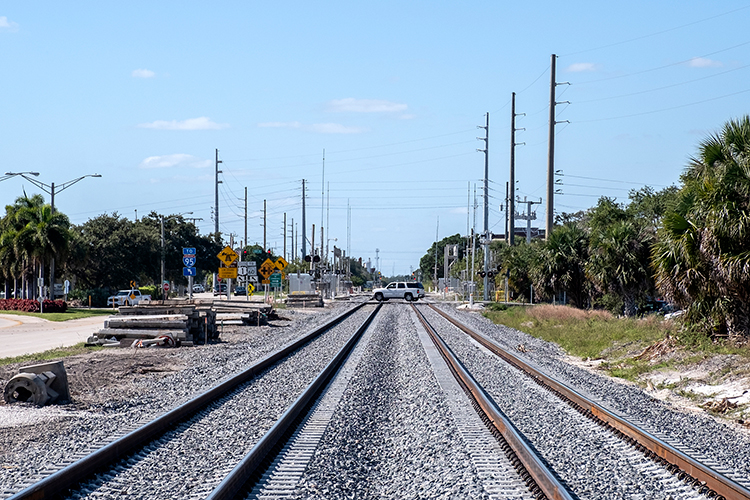
The calls keep coming in – to the county offices, Vero Beach City Hall and even local law enforcement agencies – from residents frustrated by what has been happening at our community’s railroad crossings the past few months.
Motorists are fed up with the recurring delays as work crews have closed crossings throughout the county to make the structural and safety improvements necessary to accommodate the Brightline passenger trains that soon will zip through our community 32 times each day at 100-plus mph.
And they should be.
But they’re complaining to the wrong people.
Some among the thousands of newcomers who’ve flocked to the Vero Beach area the past few years might not know this, but: Our local governments have no say in what the Florida East Coast Railway does with its tracks on property it has owned since the late 1800s.
Not only does the railroad grant us permission to cross their tracks, but the county and city pay annual licensing fees of more than $5,000 for the privilege to do so.
Our local governments also cover the crossings’ annual maintenance costs, which, depending on size and equipment, can range from $2,600 to $9,800.
And every seven years or so, when crossings need to undergo a significant overhaul or complete rebuild, we pay for that, too – at costs ranging from $80,000 to $120,000.
Those projects, however, are staggered.
In return, we get to drive across their tracks at the 31 crossings in our county, which includes seven in Vero Beach and three in Sebastian.
“The railroad was here first,” County Administrator John Titkanich said. “That’s the bottom line.”
So it doesn’t matter that the Brightline-related work has resulted in some mind-boggling scenarios, at least a couple of which go well-beyond the daily late-afternoon freight trains that park north of Aviation Boulevard and block a seemingly endless stretch of crossings through the county’s midsection for up to 30 minutes.
That’s been a problem for years.
The Brightline project, though, created workday traffic backups along major roadways, including U.S. 1 alongside downtown Vero, as well as on busy east-west corridors from Oslo to Gifford.
Especially annoying were the crossings, such as the one at 53rd Street, where the gates would open and close every few minutes when there wasn’t a train in sight. This would go on for hours.
Worse, however, were the crossings where the gates remained upright while a freight train rolled through – incidents that occurred at two locations and were documented via video on local community Facebook pages, where local posters vented their anger, expressed shock and concern, and mocked the way the project was handled.
Can you imagine if the gates fail to come down with a Brightline train hurtling down the tracks?
Longtime County Commissioner Joe Flescher can.
“A passenger train traveling at those speeds? It would be catastrophic,” Flescher said.
“Our emergency services would be strained beyond their limits. We can only hope it doesn’t happen, but we’ve seen such incidents in other jurisdictions.”
The county spent more than $4 million opposing the Brightline project, only to succumb and settle for the company agreeing to cover the costs of the needed safety improvements at the crossings.
All things considered – particularly the railroad’s far-reaching clout and long history – it was a tremendous victory.
“You have to remember the importance of expanding rail service 100 years ago,” Flescher said. “The railroads opened up the country, and the people who developed them were afforded great latitude by the federal government, which wanted to encourage them to expand.
“The tracks here might not be in the most convenient place right now, given the growth in our community and the needs of our citizens, but it was the best place then.”
Or as Vero Beach City Manager Monte Falls put it: “When the tracks were built, there was nobody here.”
It remains a concern, however, that Cleveland Clinic Indian River Hospital is located east of the railroad tracks and most of the county’s population resides west of the tracks.
So either we find a way for emergency services vehicles to circumnavigate the tracks – building a flyover at the intersection of Aviation Boulevard and U.S. 1 has been proposed – or we need to build another hospital out west.
Whatever we do, it’s up to us to overcome the obstacles posed by the railroad, which doesn’t seem to care how its trains impact our community and quality of life.
Nor does it need to.
Unfortunately, there’s nobody we can call about that.



